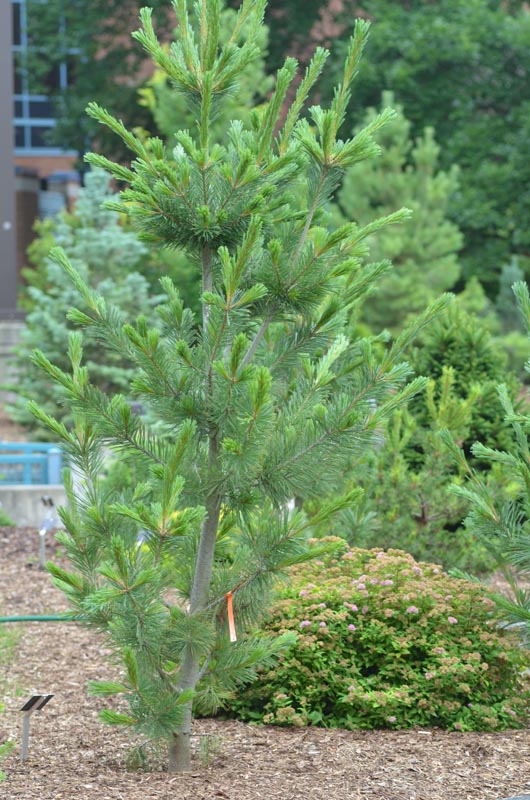
Woody > Pinus > Pinus flexilis > Pinus flexilis
Pinus flexilis
Limber Pine
Origin: Rocky Mountains of Western North America. Introduced into cultivation in 1861.
Mike's
Opinion


"
An excellent landscape pine; it is a plant that maintains a dense form of strong good looking foliage.
Michael Pascoe, NDP., ODH., CLT., MSc. (Plant Conservation)
"
| Family |
| Pinaceae |
| Genus |
| Pinus |
| Species |
| flexilis |
| Category |
| Woody |
| Type |
| Tree (evergreen) |
| Pronunciation |
| USDA Hardiness Zone |
| 4 - 7 |
| Canadian Hardiness Zone |
| 2a - 6b |
| RHS Hardiness Zone |
| H6 - H7 |
| Temperature (°C) |
| -34 - (-15) |
| Temperature (°F) |
| -30 - 5 |
| Height |
| 10 - 20 m |
| Spread |
| 5 - 12 m |
Photographs
Description and Growing Information
Flowering Period
| General Description |
| Best in full sun. It is more tolerant of salt spray on the foliage than other 5-needle pines. It is better adapted to dry soils and wind than Pinus strobus, but prefers moist, well-drained soil. |
| Landscape |
| Used as a specimen, a screen or in small groups. |
| Cultivation |
| Transplants well burlapped if root pruned, does best in moist, acidic, well-drained soil, and prefers sun or partial shade; a very adaptable species. |
| Shape |
| Pyramidal when young, when mature, has an ascending flat-topped broad crown. |
| Growth |
| Slow |
| ID Characteristic |
| Often confused with Pinus strobus. Since the needle’s are in 5’s. Needles without serrations on margin like Pinus strobus. Needles stay on the tree for up to six years. Stems are noticeably shorter than Pinus strobus. |
| Pests |
| White Pine blister rust |
| Habitat |
| Dry to moderately moist sites. |
| Bark/Stem Description |
| Smooth, pale grey when young, older bark is rough, dark brown, and scaly. |
| Flower/Leaf Bud Description |
| Ovoid, slender, sharply pointed to about 1 cm long. |
| Leaf Description |
| Needles stay on the trees for 5 – 6 years with the branches often covered with needles from tip to trunk. Needles are slightly curved or twisted. |
| Flower Description |
| Monoecious, male flowers clustered, rose coloured, female purple, female flowers are either solitary or 2’s or 3’s. |
| Fruit Description |
| Cones are sub terminal, short-stalked, cylindrical ovoid, 7.5-15 cm long, erect when young, pendulously spreading when mature, light brown in colour. |
| Colour Description |
| Dark bluish green. |
| Texture Description |
| Medium |
| Notable Specimens |
| Conifer collection, The Gardens of Fanshawe College, London, Ontario, Canada and The Niagara Parks Botanical Gardens, Niagara Falls, Ontario, Canada. A native stand can be found in Alberta, Canada, on either side the Banff Higway, west of Nordegg at Whirlpool Lookout on the dry, scree slopes leading down to the road. |
| Propagation |
| Seed should be stratified for 21–90 days at 2–5°C |
